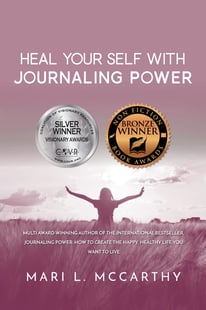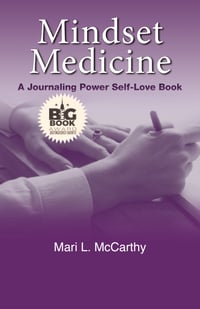In the ever-evolving landscape of personal growth and communication, journaling has emerged as a powerful tool for self-reflection and mental well-being. The practice of traditional journaling, whether in written form, art journaling, or bullet journaling, has gained widespread popularity, with numerous studies highlighting its positive effects on reducing stress and enhancing emotional awareness.
At the same time, video-based communication and content creation have taken the digital realm by storm, with a staggering 85% of internet users in the United States watching online videos regularly. This begs the question: Can we break boundaries and fuse the art of traditional journaling with the dynamic world of video expression?
This exploration aims to discover the potential benefits of combining video and traditional journaling techniques, opening new horizons for creative self-expression and fostering a deeper connection with our inner selves.
Understanding Traditional Journaling Techniques
Traditional journaling is a timeless practice that has been embraced by individuals across cultures and generations as a means of self-reflection, personal growth, and emotional expression. It involves the act of recording thoughts, feelings, experiences, and observations in a physical medium, such as a notebook or journal. The history of traditional journaling can be traced back centuries, with famous figures like Anne Frank and Leonardo da Vinci being well-known for their use of journals to document their lives and inner thoughts.
Different Forms of Traditional Journaling
Traditional journaling takes various forms, and each offers a unique approach to self-expression.
- Written Journaling: The most common form of traditional journaling involves writing down thoughts and experiences in a narrative format. This allows for a free flow of ideas and emotions, providing a sense of catharsis and clarity.
- Art Journaling: Art journaling combines written entries with creative visuals like drawings, paintings, or collages. This form of journaling allows individuals to tap into their artistic side and use visual elements to express emotions and memories.
- Bullet Journaling: Bullet journaling is a structured method of journaling that uses bullet points, symbols, and icons to organise thoughts and tasks. It provides a way to track goals, habits, and to-do lists, promoting productivity and mindfulness.
Benefits of Traditional Journaling
Numerous studies have highlighted the significant benefits of traditional journaling for mental health and self-awareness. Keeping a journal can reduce stress, improve mood, and help manage anxiety and depression. By expressing emotions and thoughts through writing or art, individuals can gain a better understanding of themselves and their experiences.
According to a study published in the Journal of Experimental Psychology, journaling about emotional experiences has been linked to reduced stress and improved emotional well-being. Another research article from the American Psychological Association suggests that writing in a journal can help individuals process trauma and negative emotions, leading to improved mental health outcomes.
Examples of Successful Traditional Journaling Approaches
Countless individuals have found success and healing through traditional journaling. One such example is Rachel Hollis, a renowned motivational speaker and author. In her blog post on The Chic Site, she shares her journey of using written journaling to overcome personal struggles and set ambitious life goals.
Another inspiring example is the famous artist Frida Kahlo, whose art journal served as a powerful outlet for her pain, emotions, and creativity. Her journals have been preserved and studied, revealing a deep connection between her emotional state and artistic expression.
All in all, traditional journaling techniques offer a valuable and proven way to connect with oneself, manage emotions, and foster personal growth. Whether through written words, artistic creations, or structured bullet points, journaling provides a safe space to explore the depths of one's mind and soul. The practice continues to be cherished by individuals seeking self-discovery and inner peace in an ever-changing world.
Exploring Video-based Communication and Expression
Video-based communication and expression have witnessed a tremendous surge in recent years, reshaping how individuals share their stories and connect with audiences worldwide. With the advent of platforms like YouTube, TikTok, and Instagram, video journals and vlogging have become prominent channels for self-expression and creativity.
Facts and statistics:
- YouTube's influence: YouTube is the second most-visited website globally, with over 2 billion logged-in monthly users.
- The rise of TikTok: TikTok has over 1 billion monthly active users, making it one of the fastest-growing social media platforms.
- Visual content dominance: Studies indicate that video content drives 12 times more shares than text and images combined, emphasizing its appeal and reach.
Benefits of video-based journaling:
- Emotional resonance: Videos can capture emotions more vividly through facial expressions, tone of voice, and body language, making the journaling experience more authentic and impactful.
- Creative expression: Video journals allow individuals to experiment with storytelling techniques, combining visuals, music, and narration to create compelling narratives.
- Broad audience reach: Video platforms provide a vast global audience, offering the opportunity to connect with people from diverse backgrounds and cultures.
- Fostering a supportive community: Video journaling communities often form around shared interests, offering support, inspiration, and feedback to creators.
Examples of effective video journaling:
- "My Mental Health Journey": A powerful video diary where an individual candidly shares their struggles, recovery, and coping mechanisms, inspiring others to seek help and destigmatize mental health issues.
"Travel Vlogging Adventures": A travel enthusiast documents their experiences worldwide, showcasing breathtaking landscapes, local cultures, and promoting responsible tourism.
"Art Journaling for Healing": An artist combines visual storytelling with journaling, using art to process emotions and communicate their personal growth journey.
The impact of video-based journaling extends beyond the creator, influencing viewers' perspectives, raising awareness on critical issues, and encouraging positive change. As technology continues to evolve, video-enhanced journaling offers a dynamic and compelling way to share our stories, fostering deeper connections and breaking barriers of self-expression.
Challenges and Limitations of Each Approach
While both traditional journaling techniques and video-based communication offer unique benefits, they also come with their share of challenges and limitations.
Traditional Journaling Techniques:
- Time-Consuming: Traditional journaling, especially written journaling or art journaling, can be time-consuming. According to a study by the American Psychological Association, individuals spent an average of 15 to 20 minutes per day on journaling activities.
- Limited Mediums: Traditional journaling techniques may limit the expression of complex emotions or experiences. Not all emotions can be adequately conveyed through written words or static images. This limitation was highlighted in a survey conducted by the Journal of Mental Health, where respondents expressed the desire for more dynamic and multimedia approaches.
- Privacy Concerns: Some individuals may feel reluctant to engage in traditional journaling due to privacy concerns. A study by Pew Research Center revealed that 58% of Americans are worried about the security of their personal information online.
Video-Based Communication:
- Technical Skills Barrier: Creating video content may require technical skills in filming, editing, and storytelling. In a survey by GlobalWebIndex, 43% of respondents cited lack of expertise as a significant barrier to engaging in video content creation.
- Camera Shyness: Many individuals experience camera shyness, which can inhibit their willingness to appear on video. A study conducted by the University of the Arts London found that 35% of surveyed participants reported feeling uncomfortable in front of a camera.
- Bandwidth and Accessibility: Video content may be challenging to access for individuals with limited internet bandwidth or living in areas with poor connectivity. According to a report by the United Nations, over 50% of the world's population still lacks reliable internet access.
Addressing Privacy Concerns and Finding a Balance:
To overcome these challenges, individuals can adopt a hybrid approach that blends both traditional and video journaling techniques. By combining written or artistic expressions with video elements, individuals can create a more comprehensive and personalized journaling experience. Moreover, they can choose to keep certain aspects private and share only selected content with a trusted audience or through secure platforms.
Embracing this blending approach can lead to a more engaging and impactful journaling experience, allowing individuals to break the boundaries and explore the full potential of self-expression.
Blending Techniques: Video-Enhanced Traditional Journaling
In the modern age of digital communication, traditional journaling has evolved to incorporate video elements, offering a unique and expressive way to capture life's moments. Video-enhanced traditional journaling allows individuals to fuse the power of words and images, creating captivating narratives that resonate on a deeper emotional level. Let's delve into some practical tips and insights on how to effectively blend video and traditional journaling techniques.
Introducing the Concept
Video-enhanced traditional journaling combines the intimacy of written expression with the visual impact of videos. By integrating video snippets into written entries, individuals can bring their experiences to life and evoke powerful emotions in their audience.
Identifying Complementary Aspects
Videos offer a dynamic dimension to traditional journaling, providing an avenue for self-expression beyond words alone. Visual cues, facial expressions, and body language enhance the narrative and help convey emotions with greater authenticity.
Practical Tips for Incorporation
- Start Small: Begin by recording short video clips that complement your written entries, gradually integrating more videos as you grow comfortable.
- Storytelling Balance: Strike a harmonious blend between writing and video, ensuring that the visual elements enhance rather than overshadow your journal's purpose.
- Embrace Imperfection: Don't be afraid of mistakes or imperfections in your videos; they add a genuine touch to your journal.
Demonstrating Hybrid Journaling Examples
- Mixed Media Collage: Create a multimedia collage by combining photographs, sketches, and short video clips to document an event or journey.
- Travel Vlogging: Record video diaries during your travels, complemented by written reflections, to capture the essence of your experiences.
- Artistic Time-Lapse: Use time-lapse videos to showcase the creative process in your art journaling entries.
Tools and Technology
- Video Recording: Utilize smartphones with high-resolution cameras or dedicated vlogging cameras for convenient video capture.
- Editing Software: Explore user-friendly online video editor to trim, enhance, and combine your video clips.
- Online Platforms: Share your video-enhanced journaling content on platforms like YouTube, Vimeo, or personal blogs for a broader audience reach.
Incorporating video into traditional journaling fosters a deeper connection with one's emotions, experiences, and creativity. It enables individuals to share their stories with a wider audience and inspire others through their journey of self-discovery.
Nurturing a Video Journaling Practice
- Setting journaling goals and intentions: To make the most of your video journaling practice, it's essential to set clear goals and intentions. Decide what you want to achieve through your videos and how they will complement your traditional journaling efforts. Setting specific goals can provide direction and motivation. According to a study by Dominican University of California, those who wrote down their goals were 42% more likely to achieve them.
- Developing a routine and finding consistency in video journaling: Consistency is key to nurturing any journaling practice. Schedule regular times for recording your video entries and stick to it. A study published in the European Journal of Social Psychology found that forming a new habit typically takes around 66 days. So, give yourself time to develop a routine.
- Overcoming challenges and embracing imperfection: Video journaling might feel daunting at first, especially if you're new to creating videos. Remember that it's okay to face challenges and imperfections along the way. Embrace the learning process and be gentle with yourself. An article by The Guardian emphasizes that embracing imperfections can lead to more creative and authentic outcomes.
- Reflecting on the evolution of one's video journaling practice: As you progress with your video journaling, take the time to reflect on how far you've come. Regularly watch your past video entries and observe your growth. This self-reflection can be a powerful tool for personal development. In a study published in the Journal of Applied Psychology, self-reflection was found to enhance learning and performance.
Conclusion:
In this fast-paced digital age, the art of journaling has evolved, breaking new boundaries and embracing innovative techniques. By blending video and traditional journaling, individuals can unlock a powerful and dynamic means of self-expression and personal growth.
Studies have shown that journaling, in its various forms, has numerous benefits for mental health and well-being. Incorporating video elements into the process can enhance emotional resonance and provide a deeper connection to our experiences. According to a study conducted by the University of Rochester Medical Center, expressive writing and journaling have been linked to improved immune function and reduced stress levels, leading to a more positive outlook on life. By merging video-based communication with traditional journaling, we have the opportunity to experience these benefits in a whole new dimension.
In a nutshell, the integration of video and traditional journaling techniques opens a gateway to personal growth, creativity, and emotional exploration. Embrace the power of video-enhanced journaling to unleash your unique voice and connect with yourself and others on a profound level. As we continue to explore the uncharted territories of self-expression, let's remember that the journey is just as significant as the destination. Happy journaling!
 Author bio: Sanket Shah is the Founder and CEO of InVideo who initiated this startup with the view of encouraging the creation and use of videos in all sectors of business as well as private lives. Sanket’s dedication has led InVideo to serve millions of users from 190 countries across the world. His continuous encouragement to all video users and desire to make video making and editing accessible to everyone has contributed largely to the video production industry.
Author bio: Sanket Shah is the Founder and CEO of InVideo who initiated this startup with the view of encouraging the creation and use of videos in all sectors of business as well as private lives. Sanket’s dedication has led InVideo to serve millions of users from 190 countries across the world. His continuous encouragement to all video users and desire to make video making and editing accessible to everyone has contributed largely to the video production industry.
Journaling Power Revolution Series





Leave Comment